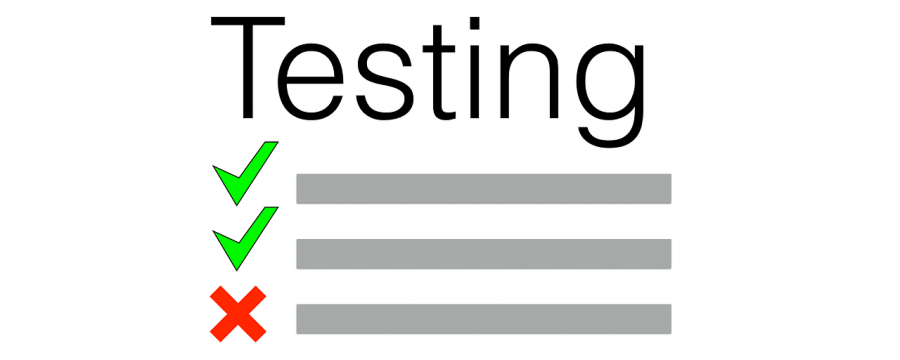Does The SAT Matter? A Look At The History and What The SAT Really Measures
May 17, 2021
On April 13th, 2021, our school conducted the SAT (Scholastic Aptitude Test), a test that is a core part of the college admission process. The feelings my fellow peers and I experienced the days leading up to it were stress, anxiety, and the fear of failing. The fear that the score we will receive will determine not just what colleges we can get into, but what colleges will have the best academics, connections, and the most prestigious. While studying for the SAT, I asked myself “What makes this a key feature in college admissions, what makes it so important, and why should it determine what my future should be?”
To understand the SAT, we have to know why it was created. During World War 1 a man named Robert Yerks, a leading member of the new IQ testing movement, convinced the U.S. Army to have him test recruits for intelligence. This would be called the Army Alpha and was the first largest conducted IQ test. When the war was over, one of Yerks’ assistants named Carl Brigham, a young psychologist, began altering the test as a college admissions test. The disturbing part of the test was the racial and ethnic bias. The top test takers were Caucasians and people of Dutch origin, but those who scored lower were African Americans and recent immigrants from Poland and Italy. He did not consider the fact that since most of them couldn’t speak English it would be much more difficult to answer certain questions. Furthermore, he ignored the fact that some did not have a degree higher or even less than a high school degree. He believed that the scores just reflected the intelligence of certain groups and that those who scored higher are the superior race. He stated in his notes “We must face a possibility of racial admixture here that is infinitely worse than that faced by any European country today, for we are incorporating the negro into our racial stock, while all of Europe is comparatively free from this taint.” He would later call this test the Scholastic Aptitude Test, or as we call it, the S.A.T.
The test was administered experimentally to a few thousand applicants in 1926 at first. The SAT wasn’t important in college admissions at the time. Only about 10 percent of high school seniors went to college in 1941. Colleges already had their own entrance exams and it was mainly students who were wealthier that attended college. However, when the G.I. Bill came out giving many veterans benefits and helped them pay for college, this led to a skyrocket in college admissions, so they had to have a tool that could help pinpoint who should be accepted, so they used the SAT as a factor. Instead of the SAT being used to measure intelligence, the College Board started to convince colleges as a good prediction factor for how well students do in college. Colleges bought into this idea and have used it as a key factor in admissions.
However, what the SAT and many people fail to realize is that the score you get doesn’t correlate with intelligence, but with wealth. The SAT is not a test only a few can get a perfect score based on intellect, but based on practice and understanding of the test, and to achieve that you need time and money. If you have a family income of $200,000 or more, your chance of scoring above a 1400 is one in five. However, if your family income is $20,000 or less, your chance is one in fifty. This is because children from wealthy families can afford professional and expensive tutors and don’t have as many responsibilities as children from poor families. Test preparation companies such as the Princeton Review charges $1,599 for a guaranteed 1400 or more SAT score in just 2 months. To some this seems to be a worthwhile investment, but only if you have that amount of money to invest in. Despite the fact that the average salary after graduation from a prestigious college like Yale for example will have you making $71,030 as your starting salary, compared to the starting salary of a less selective college such as Fort Lewis College, a small liberal arts public college in Colorado, has a starting salary of $31,000. If you compare the SAT score ranges for both of these schools, Yale has a range of 1460-1570, and Fort Lewis College has a range of 980-1200. To put into context about what is considered a good SAT score, the average SAT score for 2019 was a 1060.
Prestigious universities offer generous financial aid to low income families, for example: Yale offers $52,800, Harvard offers $61,314, and Columbia offers $61,365 in financial aid. The outcomes and aid for these schools prove that lower income kids can climb the ladder of social mobility, but are significantly less likely for them to rise up with preferences that are leaned more towards the rich when it comes to the SAT. Granted, many of these elite schools have made the SAT optional and many of them will keep it that way. The score you receive still determines every aspect of what opportunities come your way, and determines what kind of future you will have. A test that was designed to measure aptitude of prospective students instead measures your ability on test taking and what advantages you have been offered throughout your life.










kristen Lucano • Jun 8, 2021 at 8:42 am
Well-written and informative article! Thanks for sharing Daniel!